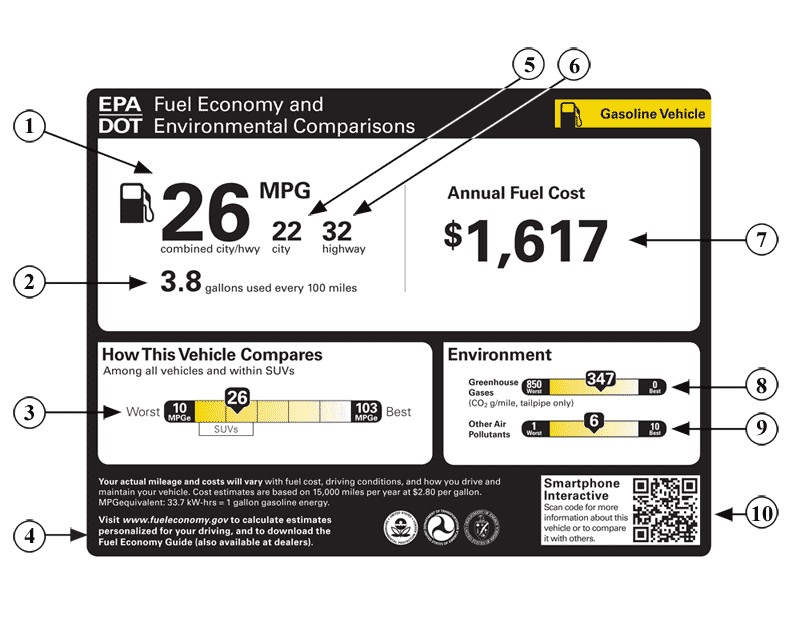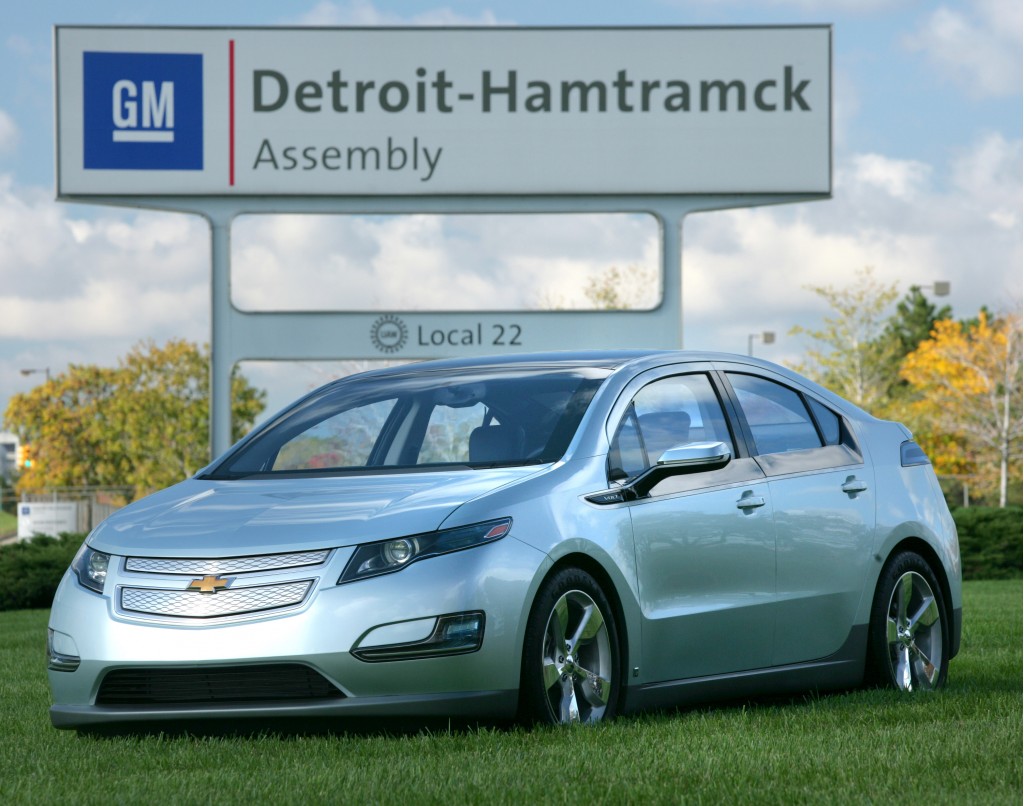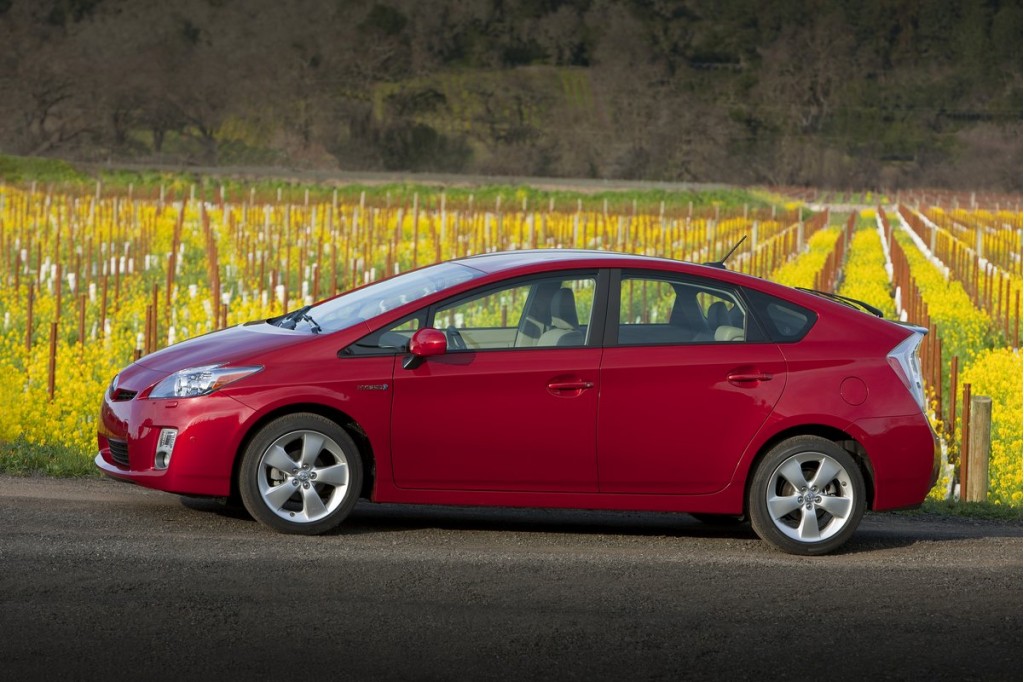Two days ago, the NHTSA said that it would require annual gas-mileage improvements of somewhere between 2 and 7 percent each year between 2017 and 2025.
Corporate average fuel economy requirements have already been set through 2016, an action facilitated by the Obama Administration soon after taking office.
In 2016, across the entire vehicle fleet weighted by sales, new-vehicle gas mileage will have to average 34.1 miles per gallon.
47 to 62 mpg?

U.S. Environmental Protection Agency adminstrator Lisa Jackson and President Barack Obama
Now, the National Highway Traffic Safety Administration has issued a notice in the Federal Register on its rulemaking for the period after that, for model years 2017 through 2025.
Final rules will be issued next year.
The notice says the agency won't require less than 2 percent increase in gas mileage each year, but it said it has "tentatively concluded" that the maximum possible improvement that automakers could achieve would be 7 percent.
That would mean average fuel efficiency reaching 47 to 62 miles per gallon by 2025--though the agency said it would assess the progress of technology in about 2020 before finalizing numbers for 2022-2025.
Costs and payback periods
The NHTSA is now researching the impacts of the different improvement levels, including the environmental benefits, the costs--to automakers and consumers--and the effects on auto safety.

2011 Nissan Leaf electric car during IIHS crash testing
Depending on the final level, vehicle cost would increase from $770 to $3,500, the agency said. Consumers would see a payback on the higher cost of a 6-percent improvement within four years, according to its modeling.
Projections from the Center for Automotive Research in Ann Arbor, Michigan, are more dire. A fleet average of 60 mpg, it says, would raise vehicle prices 22 percent, slash sales 25 percent, and cost hundreds of thousands of auto-industry jobs.
Unfortunately, retail car buyers historically overweight the initial puchase price and undervalue the impact of total ownership cost, including fuel expenses.
In other words, lower price is always more important than running costs--even if it doesn't make economic sense.
Same safety, more hybrids
But what would the increases mean for car-buying consumers?

Proposed design (2 of 2) for gas mileage and emissions impact of new vehicle, U.S. EPA, August 2010
Cars aren't likely to get less safe, for one thing. They may well get lighter, but achieving the highest results in NHTSA and IIHS crash-safety tests is now virtually a requirement in the marketplace, and manufacturers will go to great lengths to do so.
They may get somewhat slower, as engines get smaller and more efficient.
But the number of hybrids--both full hybrids like the Toyota Prius and mild-hybrids, like the 2012 Honda Civic Hybrid and the 2012 Buick Lacrosse with eAssist--will jump dramatically, as automakers work to recapture otherwise wasted energy.

2011 Chevrolet Volt outside Detroit-Hamtramck assembly plant
The NHTSA estimates that under the toughest scenario of 62 mpg by 2025, as many as 14 percent of new cars would run on grid power some or all of the time.
Today, only two volume cars--the 2011 Nissan Leaf and 2011 Chevrolet Volt--plug in at all.
Automakers: 3 percent, we can do
A level of 3 percent a year, slightly above the 2-percent minimum, is one automakers believe they can achieve, and are lobbying for. That would be a CAFE requirement of 47 mpg in 2025.
And it's important to understand, as Automotive News editor Dave Guilford points out, that a CAFE mileage number of 62 mpg isn't the same fuel economy that buyers see on window stickers--or that drivers will actually get.
The CAFE number is the result of very specific laboratory tests on rolling roads. Those tests were designed in the early 1970s and bear increasingly little resemblance to modern cars, the equipment they now come with, and evolving driving cycles.
Lab tests, adjusted for reality
That number is then run through various adjustment formulas to get to the window-sticker mileage ratings, which are supposed to be roughly the same as what drivers can obtain in a mix of real-world driving conditions.

2011 Toyota Prius
In other words, don't picture getting 62 mpg in your 2025 car, even if the Feds end up passing the most stringent 7-percent increase. Imagine something around 50 mpg--or exactly what a 2011 Toyota Prius hybrid achieves today.
(Because gas mileage is not a linear scale, the difference in fuel saved between 62 mpg and 50 mpg is tiny: less than 4 gallons every 1,000 miles, or less than $20 even if gasoline is over $4 a gallon.)
The NHTSA is working together with the Environmental Protection Agency, which sets emissions standards (which correlate directly with fuel economy requirements) and the California Air Resources Board, which is legally allowed to set its own state limits.
[Automotive News (requires subscription), Bloomberg, Detroit News]
+++++++++++













